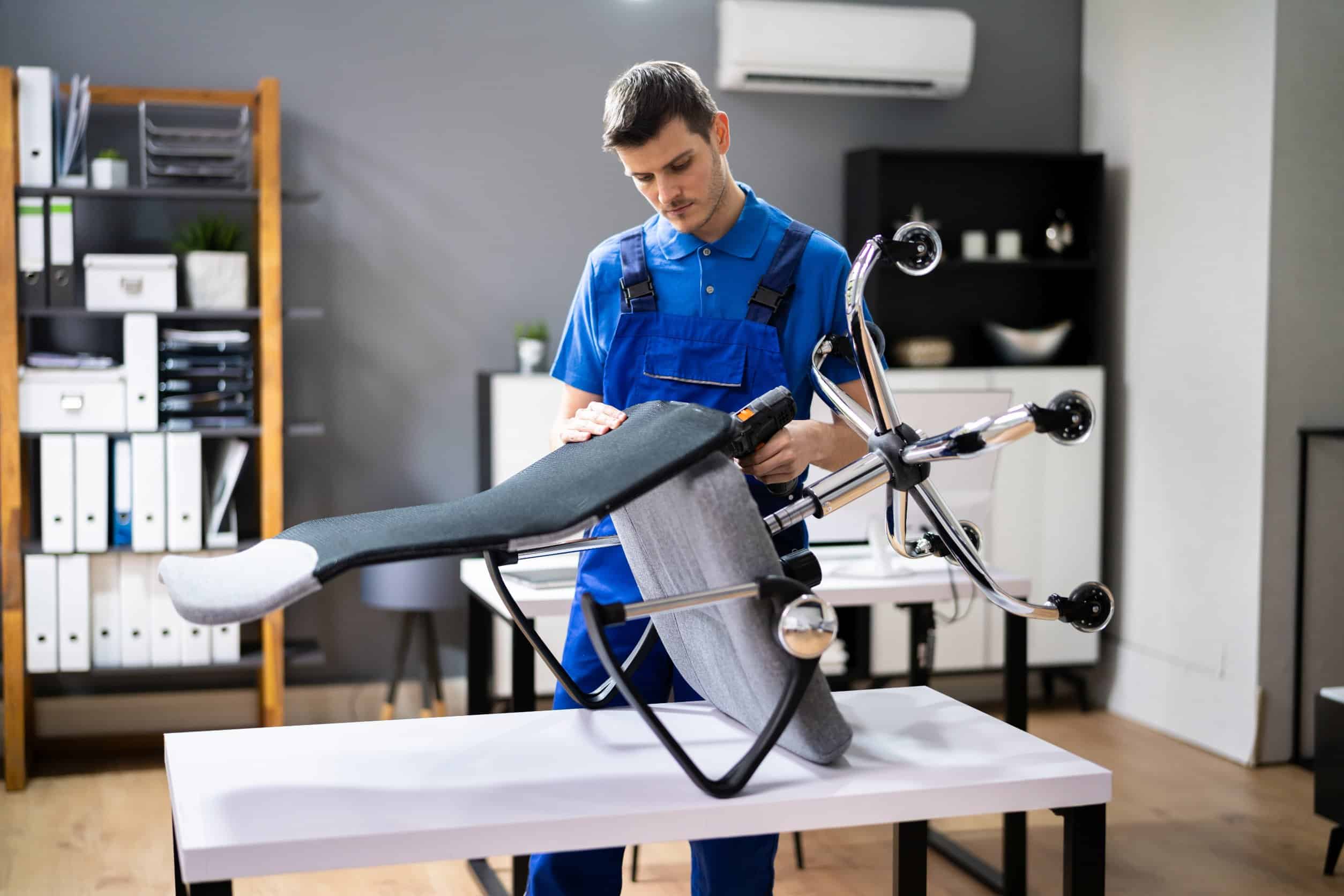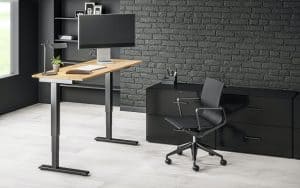If your office chair makes irritating squeaking sounds whenever you sit down, get up, bend to pick up a paper from the floor, rotate it, or ride it around the office, you might have imagined throwing it out of the window.
But what if we told you that the otherwise comfortable chair you enjoyed sitting in once upon a time could stay with you and stop squeaking quite easily?
In this article, we will discuss why your chair is screaming for help and explain how to fix it.

Why Does My Chair Squeak?
There are many reasons a chair might be squeaking; the good news is that it’s fixable.
Usually, it’s about unlubricated parts and regular wear and tear, and only on rare occasions is it difficult to identify the source of the problem and the best fixing method. So, before we jump to solutions, let’s first find out why chairs squeak. After that, we will focus on concrete solutions to the problem.
Screws and Bolts
Screws and bolts hold the chair together. If they are loosened, the chair may squeak due to a loss of stability.
Lucky for you, tackling loosened screws and bolts is fairly easy. You need to look up your chair model schema so you don’t miss any hidden screws. Then, tighten up all of the screws.
Rusty screws and bolts also cause squeaking. This issue requires a bit more effort to tackle, as you can imagine; however, it’s DIY doable.
Loosened Chair Legs
If the chair’s legs are loosened, they will probably squeak. Luckily, this cause is easy to spot since the chair will feel unstable once you sit on it. Shrinking of the dowels may be the reason why the chair got loosened.
Springs and Axles
Checking the chair’s screws and bolts is the first thing most people do, but while you’re at it, take a look at the axles and springs. If they are rusty, the chair will probably squeak.
How to Stop My Chair from Squeaking?
Now, the fixing part. How to put a stop to the annoying squeaking sound of a chair?
Look at it this way: something’s off, and the chair is crying for help. What’s the first thing you should do?
Grease Up the Metal Parts
Once you disassemble the chair to check out the screws and bolts, make sure to have some lubricating oil by your side to help loosen up the joints. The standard WD 40 should do the trick. Spray the bolts, nuts, and screws with it and dry the excess oil with a mop.
Also, oiling up the metal parts is a good way to fight off the rust.
Remove the Metal Parts
If the chair is still squeaking after the initial oil application, remove the screws and bolts and reapply the oil. Then, put them back in, tighten well, and test again.
A Little Help from Your Friends
A good piece of advice is to have a friend sit in the chair as you try to locate the exact source of squeaking. Every time you recognize a squeaker source, apply the oil in that place, and then ask your friends to move around on the chair to see whether the squeaking persists.
Check the Back Springs
If the chair is only squeaking when you lean onto the backrest, the culprit is tension in the springs. This can be fixed by rubbing oil on the tension spring on the seat. You can reach it by removing the turn-knob.
Silicone the Wheel Axles
Desk chair wheels tend to wear and tear quickly, as they suffer the strongest weight impact. That’s why you should spray the axles with some silicone.
Do that by first tuning the chair upside down and spraying the silicone on the wheels. Then, flip the chair back into its primary position and roll it to spread the silicone across the whole wheel.
Replace the Wheels
Almost all office chairs come with a standard set of wheels: the well-known, plastic, double-wheel casters. Although they are the most common choice for the majority of chair producers, they are not exactly the best.
If the source of chair squeaking is coming from your chair, you may need to replace your casters with a better set. In that case, we strongly recommend you to check out our guide on how to remove the office chair wheels.
As a replacement, we strongly recommend single-wheel silicone casters, as these are safe for all floor types and have the highest durability, thanks to their amortization power.
Another advantage of single-wheel casters is that they don’t collect so much dirt as easily as double-wheel casters do, so you don’t need to clean them and manually remove hair and other debris as often.
Call a Professional
If none of the advice above helped, perhaps it’s time to contact a professional or get a new office chair.
However, before that, there is still one more ace up your sleeve: this YouTube tutorial video made by a professional handyman. Perhaps a visual explanation provided by a professional will be of more help.
Watch How You Use the Chair
If you throw yourself into the chair every time you go to sit in it, it is expected that it will start squeaking. Consider sitting down gently and slowly.
Final Words
As you can see, chair squeaking is usually caused by normal wear and tear of joints or the wheels.
Before you start removing, replacing, or greasing up chair parts, give it sit and a ride (if it has wheels) to see (and hear) the source of squeaking. Then, all you need is some WD40 and some basic tools, and you’re ready to go.





